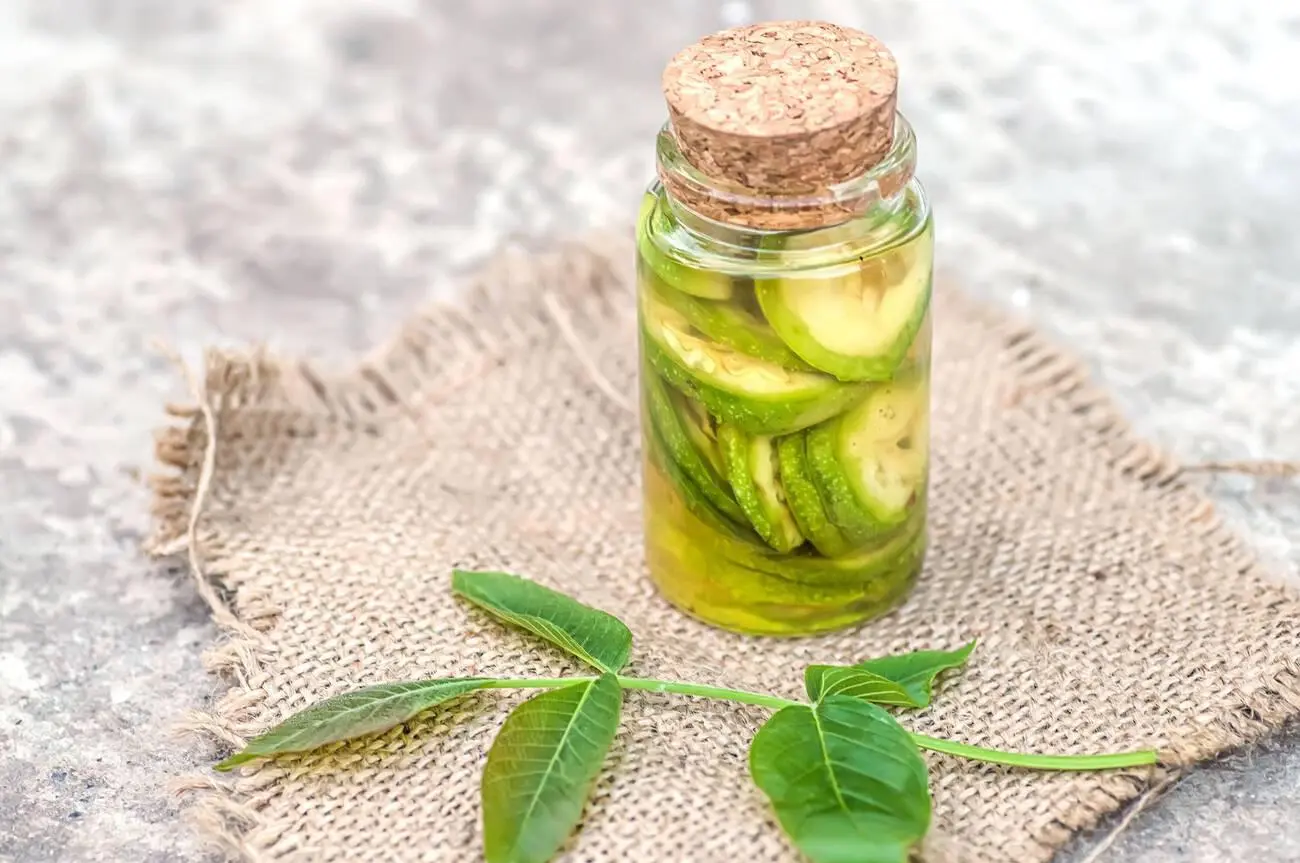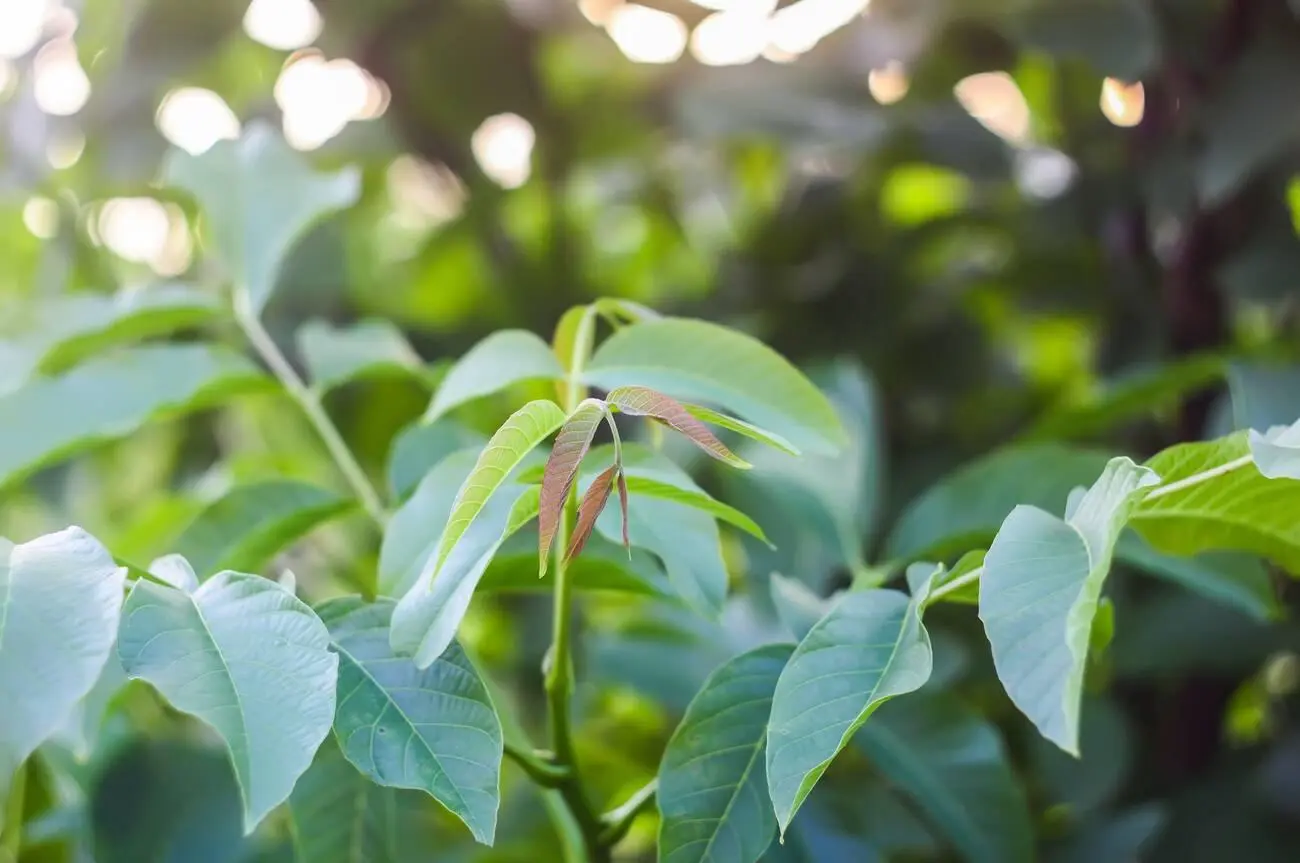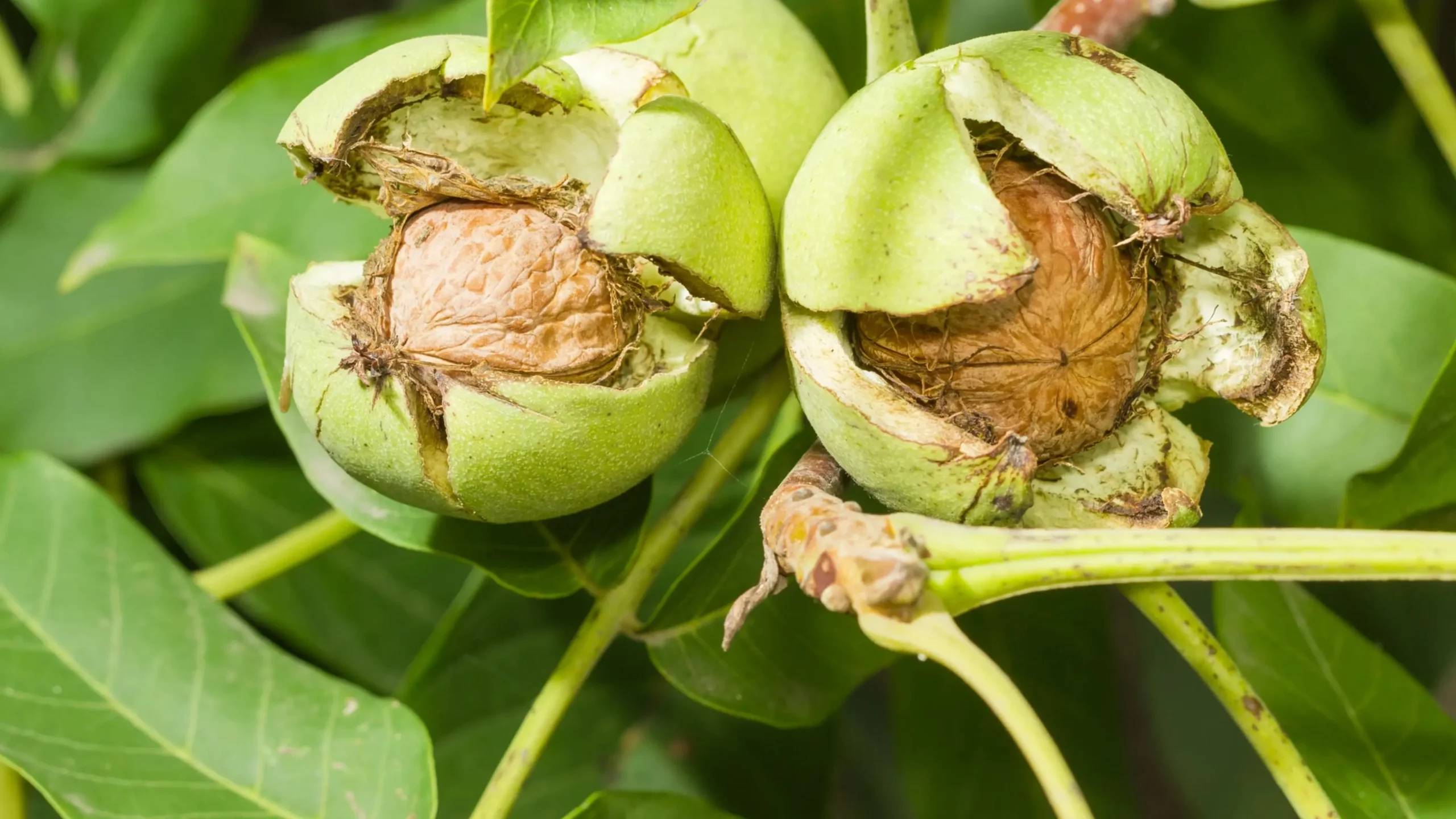At a glance
Common Name: Walnut
Scientific Name: Juglans spp. (e.g., Juglans regia for English Walnut, Juglans nigra for Black Walnut)
Native Region: North America (Black Walnut), Central Asia (English Walnut)
Lifespan: 100+ years (long-lived perennial tree)
Plant Type: Deciduous tree
Size: Height: 50-100 feet (depending on species and conditions)
Planting Zones: USDA Zones 4-9 (varies by species; Black Walnut thrives in Zones 4-9, English Walnut in Zones 7-9)
Soil Requirement: Deep, well-draining, fertile soil; prefers slightly acidic to neutral pH (6.0-7.5)
Water Requirement: Moderate; requires consistent moisture, especially during early growth and fruit development
Sun Exposure: Full sun (at least 6-8 hours of direct sunlight daily)
Foliage Color: Bright green in spring and summer, turning yellow in fall
Foliage Season: Spring to fall (deciduous)
Flower Color: Greenish-yellow (insignificant appearance)
Flower Season: Spring (April-May)
Fruit: Edible nuts enclosed in a green husk
Fruiting Season: Late summer to fall (September-October)
Wildlife: Provides food for squirrels, birds, and other wildlife; supports pollinators during flowering.
Introduction
Walnuts are a nutrient-rich nut commonly found in most parts of the United States that everyone needs for their health benefits. There are many different types of walnuts, with English and black walnuts being the most popular and widely available.

This crop is mainly used and produced for commercial purposes and for shade. This guide will help you learn how to easily grow a beautiful, healthy walnut in your yard.
Everything you need to know about walnut growing
One of the most popular and widely available nuts in the United States is walnuts, which are very popular among the people there, and although most English and black walnuts are preferred here, their production is low, so if you want to grow walnuts at home, you will have to find other varieties.
If you are looking for a tree to add beauty and shade to your yard, growing a walnut can be a rewarding venture for you.
- Most walnut species grow to 50 feet tall and typically produce 50 to 90 pounds of nuts per year.
- A small advantage of growing walnuts is that they are pest-resistant and do not easily get infected by insects.
- If you want to grow walnuts at home, you need to get some detailed information from experts or farmers because several diseases are seen in such plants, and this can ruin your efforts throughout the year.
Walnut cultivation methods
Choose Variety Wisely
If you are looking for a nice shade tree for your small yard, walnuts can be a great addition. But before growing walnuts in your yard, you need to know a few things, such as which variety is best for your climate. Here are some tips that will help you decide which species and varieties will be best for your climate.
The most important thing you need to consider for almond production is to choose a good variety whose ripening time and flowering time are short. Walnuts require temperatures between 27 and 30° Fahrenheit to grow well. The two most common varieties in the United States are English walnut and black walnut.
English Walnut: Even among the English walnut species, there are several varieties of the best walnut available. English walnuts are not only good to eat, but they are also rich in nutrients, containing a lot of protein and fiber.
Black Walnut: There is another type of walnut that is even tastier than English walnuts, the black walnut. Among the black walnut species, Quick Croft, Schneider, and Sparrow are some of the famous varieties. Compared to the English species, the black walnut shell is very hard and grows quickly.
Other Species: English walnut and black walnut require special care to grow, which requires a lot of time, but if you are looking for other low-cost varieties besides these two walnuts, then you can choose butternut and heartnut.
These nuts are also delicious, very sweet, and their shells are as hard as black walnuts. They are usually easily available in the US market and are quite inexpensive. These two species are small in size, ranging from 30 to 40 feet long. These two species, butternut and heartnut, are more commercially available than other nuts and ripen early.
Soil preparation
Another thing that is important for walnuts to grow well is adequate soil. Walnuts prefer well-drained, moist soil, but you need to make sure there is proper drainage. The most important step before preparing for walnut production is to test the soil to see if your yard’s soil is suitable for walnut cultivation or not. And if you don’t have suitable soil, you can get soil from the nursery. You should seek help from experts for all these matters.
For good soil, you need to add organic things or compost, which can mix with the soil and make it healthier.
Buying the right seedlings
Walnuts can be found bare-rooted or in containers. If you buy bare-rooted, be careful not to let the roots dry out. Arrange to plant the purchased trees as soon as possible. If you buy bare roots, store them at temperatures below 30° Fahrenheit. Keep the roots covered with wet straw or potting soil until transplanting.

Distance
Maintain a distance of at least 30 to 50 feet between trees for your yard.
Layoff
After the walnut tree grows, any leaves or branches that have reached the wire or are ripe should be pruned to keep the tree healthy and maintain its beauty.
Watering
A walnut tree needs at least two years to grow well. Walnut trees need to be watered deeply from time to time to grow well. If you want, you can water them a little every day. This will prevent the tree from drying out.
Walnut trees are generally long-lived and can be maintained with minimal care once they are mature.
Pollination
Walnut trees require almost constant pruning after they reach maturity. Planting at least two different varieties of walnut close to each other solves this problem and increases production.
Mulch
Applying three to four inches of mulch over the roots of walnut trees is very beneficial, as it not only increases the growth rate of the tree but also maintains moisture in the soil.
Problems of walnut cultivation
Weed
Removing weeds before planting helps increase the life of the tree.
Pest Control
One of the common problems that can be observed after the cultivation of walnuts is the walnut shell fly. If this fly infects the nut shells, it can destroy all the fruits of the tree.
You can seek help from experts to solve this problem. There are also several eco-friendly pesticides that can kill this type of fly infestation. Ethephon can be applied to reduce damage to nuts by insects. It accelerates the ripening of nuts.
Diseases
Thousand canker is a serious disease of walnuts, especially black walnuts, that can kill entire trees and is a serious disease that is not easily controlled. This disease is caused by Morbida and is called the Thousand Canker because a large number of cankers can occur on a single tree.
If your walnut tree is infected with this disease, you will first see common symptoms such as the crown turning yellow, the leaves becoming thin, the leaves gradually drying out, and the branches dying, and gradually the tree will eventually die. Proper care will keep your plant free from pests and diseases, and you will be able to harvest and enjoy nuts.
Walnut production, collection and storage
A walnut tree can be productive for a long time, but you need to have a lot of patience to grow this tree, as it can take seven to eight years, and in some species, 10 to 15 years, to fully mature. You can produce 50 to 80 pounds of shelled almonds per year from one tree. There are several species that can also produce more in good climates and weather.

After the fruit is ripe, you can peel it and store it in an airtight container in the refrigerator. It can dry out in three to four days at normal temperatures, but it will keep for a long time if you keep it in the freezer.
Walnuts are ready to harvest in late summer or early fall when the husks split open. Wear gloves when handling husks, as they can stain your hands.
Nutritional benefits of walnuts
Like other nuts, the walnut itself is a very healthy and nutritious fruit. They contain a lot of omega-3 fatty acids and protein, which are important for your health, especially for the elderly and young children. Doctors recommend eating two walnuts a day. You can also soak walnuts in one cup of milk, which contains a lot of polyunsaturated fat. Including walnuts in your daily diet will help reduce LDL cholesterol and help you live a healthy life.
